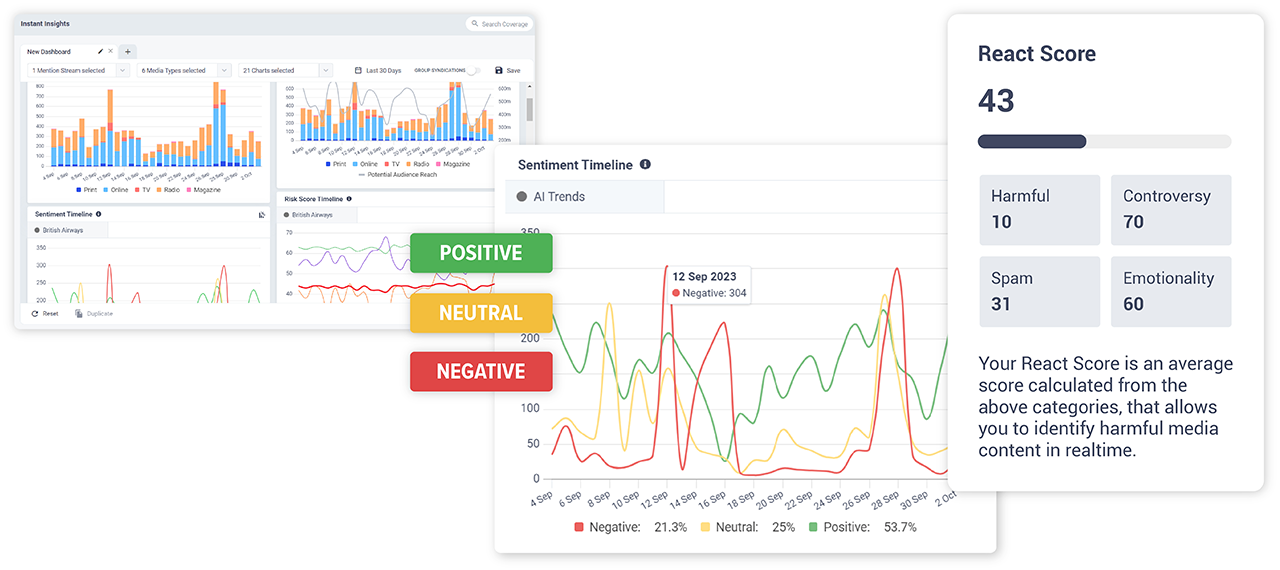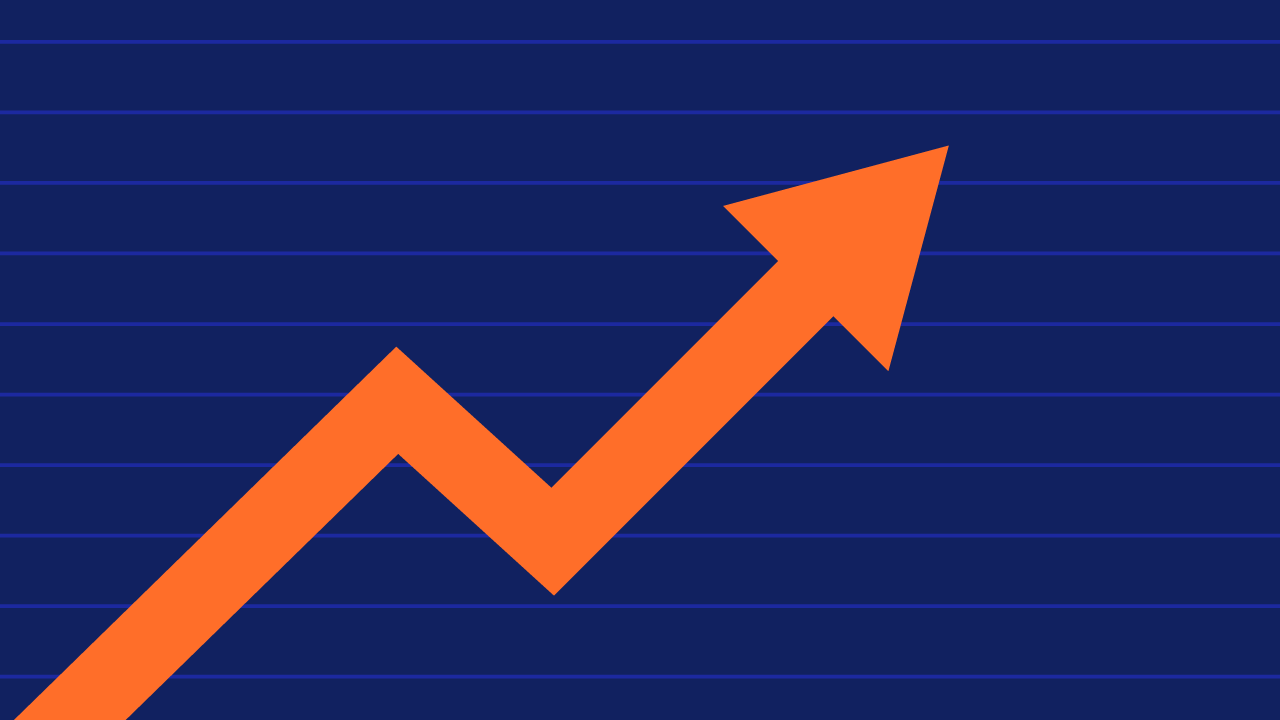Artificial Intelligence (AI) might seem like a fresh and exciting technology thanks to the emergence of generative tools like ChatGPT, but in truth we’ve been living with it for some time. Once a product of science fiction writers and Hollywood movies – think the near-future Los Angeles in Her or Tony Stark's computer J.A.R.V.I.S. from the Marvel universe – AI is firmly and productively a part of our everyday lives.
In fact, it’s probably in many more places than you realize. Machine learning algorithms, the method by which AI systems respond to user input and perform tasks, are the foundation of smart home tech like Amazon’s Alexa and Apple’s Siri voice assistants. The FaceID function you use to unlock your smartphone is AI. So too is the Netflix recommendation engine that suggests your next series binge.
All this technology around us is powered by artificial intelligence – and it’s no surprise to learn that the public relations and corporate communications industries have been using it long before the arrival of ChatGPT.
AI Adoption in PR and Comms
The most obvious example of AI’s application in PR and comms is sentiment analysis. This tool has been present in the comms space for over a decade and is underpinned by natural language processing (NLP) and machine learning – two subsets of AI used to understand the emotions expressed in text and classify them as positive, negative, or neutral.
Sentiment analysis shows that the capability of a machine to understand human language is nothing new, but what’s getting the PR industry excited is these large language models (LLM) interacting with humans in a conversational way and creating text from scratch. In other words, ChatGPT and the rise of generative AI.
According to the 2024 Global Comms Report, 32% of PR pros surveyed are using generative AI frequently, while 27% are considering starting to experiment with it. Of those using it regularly, the most popular use cases are creating content for external and internal audiences, content review and optimization, crafting pitches, and writing press releases. It would be no surprise to see these numbers increase by the time next year’s report rolls around.
AI has long had the potential to unlock clarity and speed across many of the core workflows of PR and communications professionals – but even with the latest generative developments, it isn’t a catch-all solution, or a replacement for people in the workforce.
An AI-based tool can quickly and precisely answer a specific question it is asked, but it’s also limited by the question or prompt. From that perspective, it has largely been adopted as a "co-pilot" that can help take care of time-consuming work and enable PR pros to focus on the higher value opportunities that matter most to a brand.
Use Cases for AI in PR
At its core, AI is helping to do a lot of the work that a human would, but at speed and scale (and in some cases, it's happening in the tools you use right now).
With the help of AI and automation, many routine tasks for comms professionals now take far less time than before.
Here are some of the most prominent use cases for AI in PR:
- Sentiment analysis: Analyzing and understanding what people are saying about your brand, getting to grips with the emotional tone in a piece of text, and tracking it across multiple channels, are vital for comms teams. If you don’t know where you stand with brand sentiment, how are you expected to change it for the better? Sentiment analysis does this at speed and scale.
- Automation: Think of this as AI mimicking human behavior, helping to accomplish a task that would normally be viewed as mundane and time-consuming. One automated task relevant to PR and comms is reading articles to understand their relevance, then filtering and sorting them before supplying them to clients. This grunt work can be processed and completed by AI far faster than any human.
- Summarization: Sifting through news sources to create condensed versions of multiple articles or generating summaries of social media conversations and emerging trends can be aided by AI summarization. This is particularly useful for comms teams in the creation of media coverage briefings for C-suite execs.
- Content creation: Creating content, whether that's an article, an image for a social media post, or a press release, can now be streamlined and sped up thanks to generative AI. By leveraging technology like ChatGPT and Midjourney, comms and PR teams can get past the blank page quickly and find new ways to engage with their target audiences.
As the PR and comms industry gradually begins to unlock AI’s potential, these use cases will expand and create opportunities to work smarter and more efficiently.
"Today we have AI capable of performing tasks that require reasoning and understanding, think writing a press release or summarizing articles. This is AI as a copilot, in which we still need to provide specific direction," says Antony Cousins, Executive Director of AI Strategy at Cision.
"The next step is AI as autopilot, where an AI interacts with its environment, and even other AI, to carry out tasks it has identified to achieve a goal. This goes beyond creating a single press release, instead using AI to create an entire digital campaign including the planning and audience analysis required to create key messages and content encompassing emails, social media, press releases and much more."
The next step is AI as autopilot, where an AI interacts with its environment, and even other AI, to carry out tasks it has identified to achieve a goal.
While it's difficult to predict the future with any certainty, there are interesting debates that need to be had about human roles in PR and comms. The industry will ultimately need to take accountability for the actions of the AI, and ensure it sets a standard for the models deployed.
How CisionOne Uses AI to Empower Comms Teams
Cision’s all-in-one media monitoring platform, CisionOne, delivers real-time, in-depth media intelligence to help you make faster decisions and shape more informed communications strategies.
The platform's media monitoring and outreach features offer AI-driven tools to streamline your PR workflow and free up time to execute more strategic, human-led tasks. These include:
Harmful Content Detection with React Score
The problem: More channels, platforms, and media outlets can mean more mentions and discussion around your brand than ever. That means a greater risk that you could be associated with potentially harmful content or information. To identify it, you may need a deeper understanding of a story than sentiment analysis can provide.
The AI solution: CisionOne’s React Score is powered by 17 advanced NLP models to identify racism, sexism, controversy, spam, fake news, as well as abroad range of emotions in relation to your brand. With real-time alerts, you can see stories impacting your brand reputation instantly and spot evolving trends across your entire coverage dataset.

AI Article Summarization in Curated Email Reports
The problem: The more coverage your brand gets, the harder it is to scan through individual articles to get a sense of your earned media. The reports you put together for execs should give a snapshot of these brand mentions, but you may not have the resources to summarize every single piece of content.
The AI solution: CisionOne’s curated email report feature now includes AI summarization, giving users the choice of either short or long summaries (or none at all) upon entering the report builder. They can then rewrite these summaries themselves in the editor. This AI model has been tailored to factor in the specific keyword used to create more accurate and bespoke results.
Generative AI Pitching for Media Outreach
The problem: Cold contacting a journalist isn’t as simple as firing out a quick email. You must think about personalizing it to the recipient, ensure the content is relevant, and keep your message concise. Get this right, and your initial pitch may lead to earned media coverage and the start of a fruitful PR-reporter relationship.
The AI solution: Built into CisionOne Outreach, Pitches is a generative AI support tool that helps write and revise pitch emails efficiently. It can be used with any individual contact or media list you’ve created, using AI to tailor message tone, pull quotes, and add industry detail.
Looking for further advice on artificial intelligence, check out From AI to Z: A Starter Guide to Using Generative AI in PR & Comms.
To explore CisionOne and its full AI capabilities, schedule a demo today.
More on AI from Cision:








